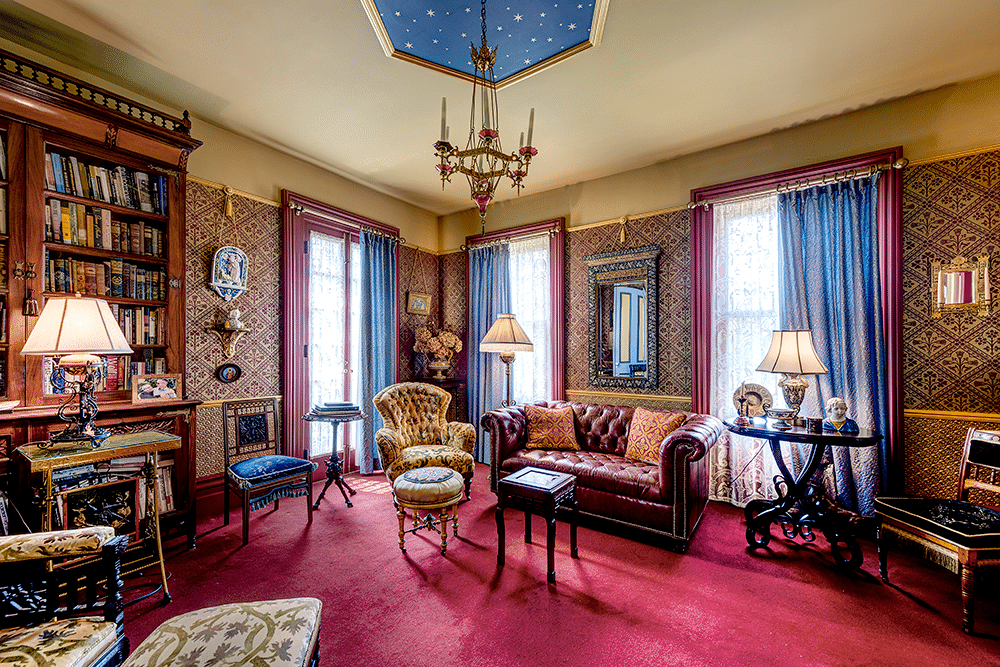A Stroll Through Hunters Point
The city targeted Hunters Point in southwest Queens (as well as Williamsburg) for neighborhood “renewal” several years ago, which entailed changing the zoning to make glassy, high-rise apartment buildings facing the water possible. The decision has had benefits, as Gantry State Park, named for the large lifts that once transported goods from barges into railcars…

The city targeted Hunters Point in southwest Queens (as well as Williamsburg) for neighborhood “renewal” several years ago, which entailed changing the zoning to make glassy, high-rise apartment buildings facing the water possible. The decision has had benefits, as Gantry State Park, named for the large lifts that once transported goods from barges into railcars here, has become a jewel.
Some say, though, that the influx of towers has overly taxed the sewer system and that there’s still no real grocery shopping to be had on Vernon Boulevard. It’s like a big city has been plunked down in a place where there’s nothing to support it.
So, while previous trips to Hunters Point have found me down by the water, this time I got off the No. 7 train at the Vernon-Jackson station and stayed inland along Vernon Boulevard to take a look at the quickly developing area.
First, however, I did make a foray up Jackson Avenue for lunch at The Creek and the Cave, at Jackson Avenue and 49th Avenue, opposite the Pulaski Bridge to Brooklyn.
By day it is a Tex-Mex restaurant and by night a performance space for comics, in the mold of the old Improv. It exhibited pieces by local artists at one point, but now shots of comics are hung on the walls. I’m not much of a food critic but they sell me tacos they way I like them, the atmosphere is relaxed and I’m greeted with a smile when I come in.
Looking west on 44th Drive from Vernon Boulevard toward Midtown, the Trump World Tower at UN Plaza and East 47th, once the world’s tallest residential building, dominates the scenery. Since the building was finished in 2001, perhaps it’s not a coincidence that it resembles the alien monoliths in Stanley Kubrick’s 2001: A Space Odyssey. (Though so far, no one has evolved under its influence.)
At 43rd Avenue and Vernon Boulevard is an ivy-covered brick building that’s home, on the 43rd Avenue end, to DuVal Enterprises, a former metal foundry whose interior has been developed into a series of spaces for magazine and video shoots.
Beginning in the 19th century, fine varnishes were manufactured here by the Emil Calman Co. Later, Mayflower Ice Cream was made here (a painted sign on the Vernon Boulevard side is still visible when the ivy is absent during the cold months). Then it became the Albra Metal Foundry. By the 1970s the building was empty and derelict, and it remained so until it was purchased by the Du Val family, which repurposed it.
The New York Architectural Terra Cotta Works was established nearby in 1886 by James Taylor, who was fresh off successes at the Boston firm Lewis and Wood and the Boston Terra Cotta Company. The New York works would go on to produce terra cotta for Carnegie Hall and the Ansonia Hotel. While Taylor died in 1898, his business would continue to thrive until 1928.
The company’s small office/showroom building, built in 1892, still stands at 42-10 Vernon Boulevard, albeit a bit worse for wear after about 120 years. The brick building, pictured at the top, has been landmarked and is presently shrouded under construction netting; it is currently owned by the nearby Silvercup Studios, which is restoring it.
The Queensboro Bridge, which touches down here, has spanned the East River and connected Manhattan and Queens since 1909. Before that, Queens was largely still farmland, with urbanity centered around three town centers: Long Island City, Flushing and Jamaica. The bridge came into use not long after Nassau County, itself still farmland, separated from Queens while Queens’ remaining towns joined NYC, in 1898.
Sometime after the bridge was completed, many Manhattanites started calling it the 59th Street Bridge. In 2011, the bridge was retitled the Ed Koch Queensboro Bridge after the mayor who served from 1978 to 1989. The Triborough was renamed at the same time, becoming the Robert F. Kennedy Bridge, in honor of the former Senator from NYC who was murdered after his victory in the California presidential primary in June 1968.
We blithely carry on calling them the Queensboro and Triboro.
This Vernon Boulevard walk is accessible from the No. 7 train (Vernon-Jackson station) as well as the G train (21st-Van Alst station, the first in Queens after crossing over from Brooklyn). Hunters Point is also served by the B32 and B62 buses crossing on the Pulaski Bridge.
I will be giving a Forgotten NY tour in Hunters Point on Sunday, June 28, at 12 noon. Meet on the Vernon Boulevard traffic island at 50th Avenue (Vernon Boulevard subway stop). It’s $15 for members of the Greater Astoria Historical Society, $20 for non-members. The tour should run about three hours.
Kevin Walsh is the webmaster of the award-winning Forgotten NY and the author of Forgotten New York and, with the Greater Astoria Historical Society, Forgotten Queens.













Actually the Triborough Bridge was renamed in 2008 and the Queensboro Bridge in 2011. Additionally Austrians like myself don’t blithely continue calling them Triboro and Queensboro Bridges. We PROUDLY call them by their rightful names.